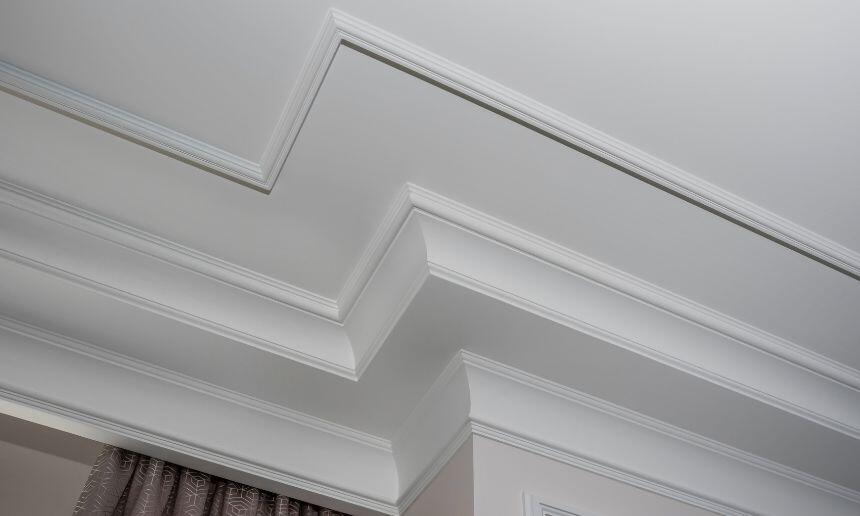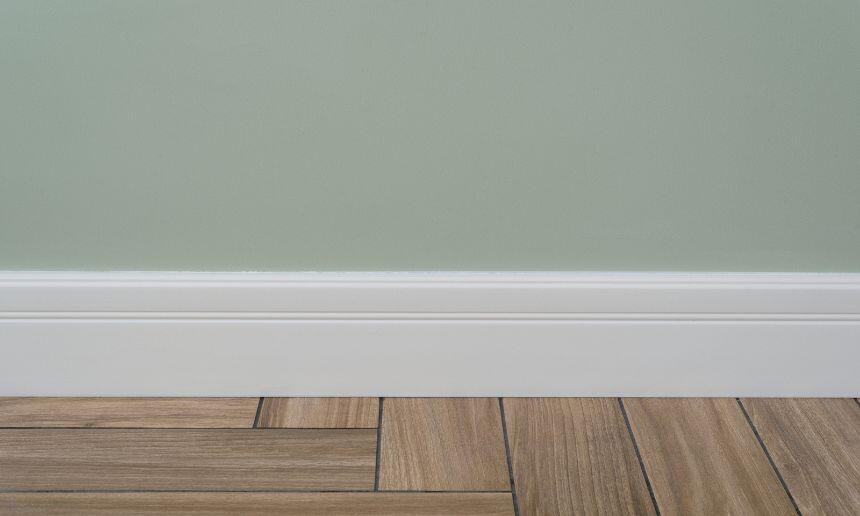Crown Molding Vs Baseboard – What’s The Difference?
Wall trim is often that final touch that can add a touch of elegance and visual statement to any room while accentuating other home decor elements.
At the same time, trim also has a practical role, covering gaps, joints, and other minor imperfections on room surfaces.
Depending on where and how they’re installed, there are several different types of trims and this can often be confusing to some homeowners.
This is especially the case with those who have less experience with this kind of stuff, but still want to do some DIY work around the house.
Two types of trims that people particularly have trouble telling apart as they serve a rather similar purpose are crown molding and baseboard.
However, these two have some notable differences and I’ll compare crown molding vs baseboard to explain what those distinctions are and what each of these trims is exactly used for.
So, let’s dive in!
| Crown Molding | Baseboard | |
| Placement | Installed at the top of the wall, where the wall meets the ceiling | Installed at the bottom of the wall, where the wall meets the floor |
| Function | Used to add decorative element and finish to a room | Used to cover gaps between the wall and the floor, and add decorative element |
| Size | Typically larger and more ornate than baseboard | Typically smaller and less ornate than crown molding |
| Installation | Requires more skill and precision to install | Easier to install than crown molding |
| Cost | More expensive than baseboard due to complexity and size | Less expensive than crown molding due to smaller size and simpler design |
Table of Contents
What Is Crown Molding?

Crown molding, also known as a cornice or ceiling molding, is a transitional trim piece between the ceiling and the wall.
Initially, crown molding served only to cover the gap between the ceiling and the wall, but over time it gained a much more prominent role as an important ornamental element of home decor and often feature intricate designs.
So, they not only conceal the imperfection wall and ceiling but also provide an elegant finish, thus improving the value of the entire home.
It can be made of various materials, but, in most cases, crown holding is made of wood or plastic.
It’s typically proportional to the baseboard and ranges from 3 to 5 inches in size.
Still, the size commonly increases with the height of the wall, so higher walls can feature crown moldings of 5 to 7 inches.
Larger moldings are often created by combining several smaller ones.
What Is a Baseboard?

Baseboard has a similar purpose to crown molding, with the difference being that it’s a transitional piece between the floor and the wall,
They hide the irregularities in this area and conceal the gap between the floor and the wall, but commonly don’t have that much of an ornamental role.
Still, they do also serve to protect the wall bottoms from getting damaged or dirty from stuff such as vacuum cleaners, brooms, or mops.
The design is typically not as intricate as with crown molding, and baseboards usually feature only a simple detail cut following the top edge.
Along the bottom edge, baseboards often have a separate, semi-circular piece of molding commonly called base shoe molding or quarter round.
Typical baseboards are around 3-5 inches high but can be up to 8 inches depending on how tall the wall is.
In modern homes, taller baseboards are frequently the preferred option.
Crown Molding Vs Baseboard – What’s The Difference?
Both crown moldings and baseboards are decorative pieces with similar purposes, but they do differ in a couple of important aspects.
The most obvious difference is, of course, where they’re placed, as crown molding is installed between the ceiling and the wall, while baseboards are set at the bottom of the wall.
Another important distinction is how these two are installed. Crown moldings are installed at an angle, while baseboards lie flat against the wall.
This makes the installation process of a baseboard much easier than installing the crown molding.
In addition to adding to the aesthetics of the room, baseboards also have the functional purpose of protecting the bottom of the drywall.
So, they are more likely to be found in almost every home, compared to crown moldings which are, basically, optional.
On the other hand, crown moldings are usually more detailed with a higher number of design features.
Can You Use Baseboard as Crown Molding?
Baseboard can be used as crown molding and many homeowners do this.
It can be installed between the ceiling and wall just as easily as at the bottom of the wall and will hide any potential imperfections in this area.
However, as the baseboard is flat and not angled, you won’t be able to achieve the room profile that can be accomplished with proper crown molding.
Additionally, as walls sometimes shift, especially in homes that have been built years ago, baseboards will not be able to conceal these flaws as well as the crown molding.
Plus, using baseboard instead of crown molding, you will lose on some of the visual appeal the latter adds to the entire room.
Can You Use Crown Molding as Baseboard?
While you can technically use crown molding as baseboard, it’s in no way recommended.
The crown molding is typically cut at an angle of 45 degrees to fit the corner between the wall and the ceiling.
This means that it lacks support in the middle which can lead to crown molding being easily broken if used at the bottom of the wall, as it would be exposed to hits from kids or pets stepping on it or from vacuum cleaners and brooms.
In addition, as many crown moldings are made from dense foam, even if they don’t break, they would get dinged up when hit.
Also, crown moldings are often more decorative than traditional baseboards, with a more intricate design, so they simply wouldn’t look good at the bottom of the wall.
Conclusion
Both crown molding and baseboard are important elements of interior decor and play a vital role in making each room look more appealing.
They allow for a seamless transition between walls and ceilings or floors and hide any potential imperfections in these areas.
While the basic function is more or less the same for both elements, crown moldings have a more decorative purpose, while baseboard also has a practical role in protecting the joint between the floor and wall.
The two work best when they complement each other, so you should pay particular attention when choosing which ones to install.
They don’t necessarily have to match, but having them in corresponding size, style, and color will give the whole room a much more cohesive appearance.




